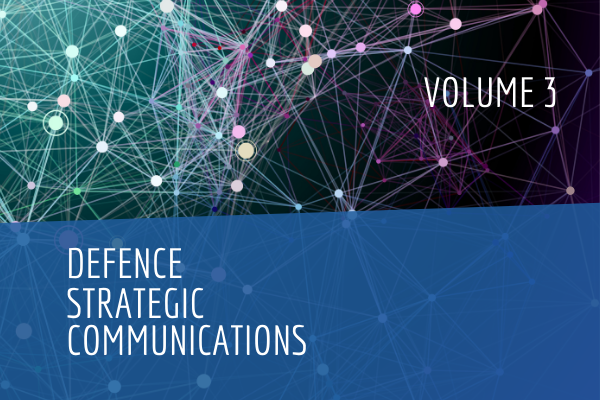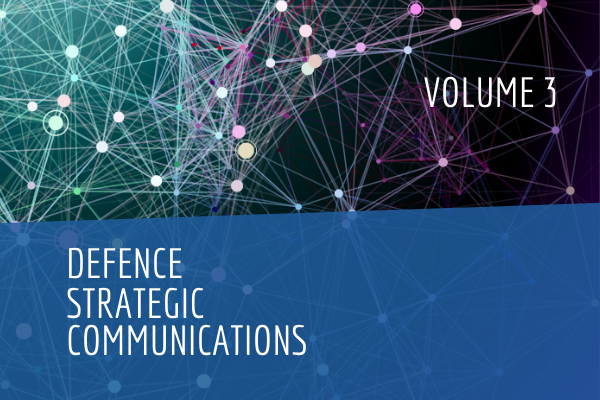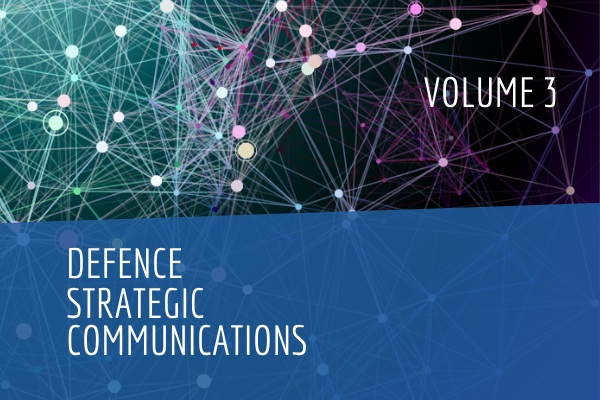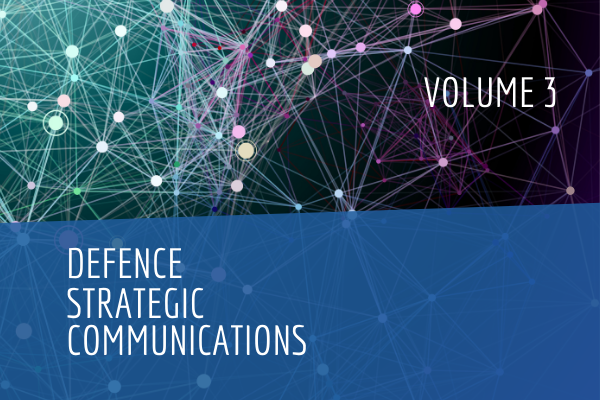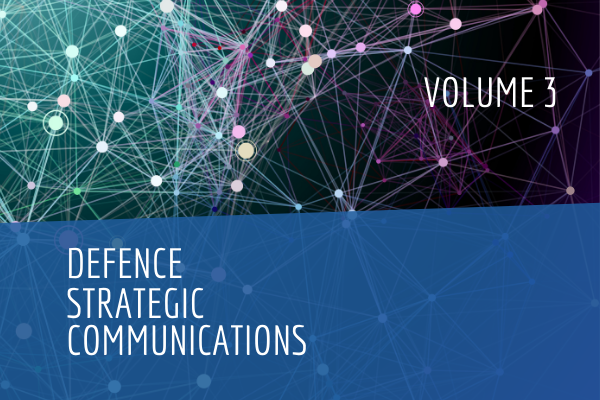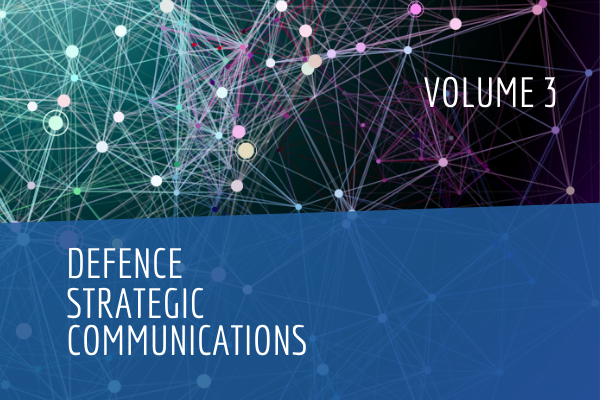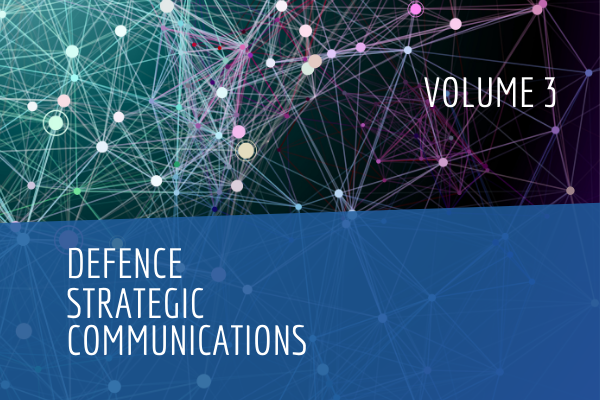Abstract
Despite rising tensions in East Asia, the Japanese government has not adopted a comprehensive policy, doctrine, or institution for strategic communication (StratCom) to date. The lack of a formal StratCom concept or framework, however, does not mean that Japan is not engaged in strategic communication. The review provided in this article reveals the heavy reliance of the government on the machineries of public diplomacy to communicate its policy and intent, through which it wishes to integrate its messages. Moreover, Japan is an avid practitioner of ‘messaging via deeds’, an aspect hitherto not understood as a Japanese StratCom practice. Japan’s de facto practice of strategic communication reflects the fundamentally political nature of strategic communication, building as it must upon the particular political and historical landscape of the nation, in which the rise of China is a central factor. The analysis outlines the key challenges for Japanese StratCom practice, namely, the danger of miscalculations occurring as a result of uncoordinated messaging, especially via deeds; the ‘say-do gap’ as the government struggles to fulfil some of its aspirations under the rubric of ‘proactive contribution to peace’, and the difficulty of sending coherent messages and avoiding unintended messaging.
Keywords: public diplomacy, Japan, China, narratives, strategic communication, strategic communications
About the author
Chiyuki Aoi, PhD is Professor of International Security at the Graduate School of Public Policy at the University of Tokyo. Her main publications include Legitimacy and the Use of Armed Force: Stability Missions in the Post-Cold War Era and UN Peacekeeping Doctrine Towards the Post-Brahimi Era?: Adapting to Stabilization, Protection & New Threats.
Bibliography
Abe, Shinzo. ‘Confluence of the Two Seas’. Gaimusho [Ministry of Foreign Affairs]. 22 August 2007, http://www.mofa.go.jp/region/asia-paci/pmv0708/speech-2.html
________.‘Peace and Prosperity in Asia, Forevermore’. Gaimusho, ‘Keynote Address by H.E. Mr. Shinzo Abe, 30 May 2015, http://www.mofa.go.jp/fp/nsp/ page18e_000087.html
Aoi, Chiyuki. ‘Conditions for Effective Intelligence and Information-Sharing: Insights from Dutch–Japanese Cooperation in Iraq, 2003–2005’. In Information Sharing in Military Operations, edited by Irina Goldenberg, Joseph Soeters, and Weylon H. Dean. New York: Springer, 2017.
Aso, Taro. ‘Global Management and the Mission for Japanese Diplomacy’. Gaimusho,
1 August 2017).
BBC. ‘China establishes “air-defence zone” over East China Sea’ (23 November 2013).
Bolt, Neville. Violent Images; Insurgent Propaganda and the New Revolutionaries. London: Hurst and Co., 2012.
Burke, Mathew M. ‘Elite Japanese Paratrooper Unit Joins Talisman Saber Drills for the First Time’. Stars and Stripes, 18 July 2017, https://www.stripes.com/news/elite-japanese-paratrooper-unit-joins-talisman-saber-drills-for-the-first-time-1.478500#. WYBA9q3APdc (accessed 1 August 2017).
Drifte, Reinhard. ‘The Senkaku/Diaoyu Islands Territorial Dispute between Japan and China: Between the Materialization of the “China Threat” and Japan “Reversing the Outcome of World War II”?’. UNISCI Discussion Papers, № 32 (May 2013).
Dudden, Alexis. ‘Standing with Historians of Japan’. Perspectives on History, March 2015: https://www.historians.org/publications-and-directories/perspectives-on-history/ march-2015/letter-to-the-editor-standing-with-historians-of-japan (accessed 25 July 2017).
Erickson, Andrew S. ‘China Military Parade: 3 September 2015, Your Complete Hardware and Logistics Guide (Updated Version)’: http://www.andrewerickson. com/2015/09/china-military-parade-3-september-2015-your-complete-hardware-and-logistics-guide-updated-version/.
Fifield, Anna. ‘U.S. Historians Urge Japan Not to Gloss Over Past Sexual Slavery’. Washington Post, 10 February 2015.
Freedman, Lawrence. Transformation of Strategic Affairs (London: IISS, Adelphi Papers 379, 2006).
Frost, Mervyn and Nicholas Michelsen. ‘Strategic Communications in International Relations: Practical Traps and Ethical Puzzles’. Defence Strategic Communication Vol. 2 (Spring 2017): 9–34.
Gady, Franz-Stefan. ‘Deterring China: Japan to Develop New Anti-Ship Missile for Defense of Senkakus’. The Diplomat, 15 August 2016: http://thediplomat. com/2016/08/deterring-china-japan-to-develop-new-anti-ship-missile-for-defense-of-senkakus/ (accessed 16 July 2017).
Gady, Franz-Stefan. ‘US, Japan Practice Defending Ryukyu Islands’. The Diplomat, 10 February 2017: http://thediplomat.com/2017/02/us-japan-practice-defending-ryukyu-islands/ (accessed 16 July 2017).
Gaimusho [Ministry of Foreign Affairs of Japan]. ‘Communication and Reconciliation in the Post War Era’ (video), 17 May 2015: https://www.youtube.com/ watch?v=YIZptgGafhs (accessed 17 July 2017).
Gaimusho. ‘Koho bunka gaiko,’ [Public Affairs Cultural Diplomacy], Heisei 29 (June 2017).
Gaimusho. ‘Summary of Remarks by Mr. Shinsuke Sugiyama, Deputy Minister for Foreign Affairs in the Question and Answer Session’ at the Committee on the Elimination of Discrimination against Women, United Nations Office in Geneva, 16 February 2014: http://www.mofa.go.jp/a_o/rp/page24e_000163.html.
Giles, Keir. ‘Russia’s ‘New’ Tools for Confronting the West ; Continuity and Innovation in Moscow’s Exercise of Power’, Chatham House, Research paper: https://www.chathamhouse.org/sites/files/chathamhouse/publications/2016-03- russia-new-tools-giles.pdf.
Hallahan, Kirk et al. ‘Defining Strategic Communication’. International Journal of Strategic Communication 1, №. 1 (2007): 3-35.
Hayashi, Keiichi. ‘China Risks becoming Asia’s Voldemort’. The Daily Telegraph, 5 Jan 2014.
‘Heisei niju-nana nendo Jieitai togo enshu kakuchi de daikibo ni Riku-Kai-Ku kyodo kunren’ [Fiscal 2015 Self-Defense Forces Joint Exercises: Large-Scale Joint Drills by Ground, Maritime, and Air Forces Around the Country], Bouei News, 15 November 2015: http://www.boueinews.com/news/2015/20151115_1.html.
Heng, Yee-Kuang. ‘Three Faces of Japan’s Soft Power’. Asian International Studies Review 18, № 1 (June 2017): 171–188.
Heuser, Beatrice and Harold Simpson. ‘The Missing Political Dimension of Military Exercises’. RUSI Journal, 162:2 (2017): 1–9.
Hornung, Jeffrey W.‘Gauging Japan’s Proactive Contributions to Peace: The Rhetoric Has Been Strong, but Has It Been Matched by Action?’. The Diplomat, 27 October 2015.
Hosoya, Yuichi. ‘The Rise and Fall of Japan’s Grand Strategy: The “Arc of Freedom and Prosperity” and the Future Asian Order’. Asia-Pacific Review Vol.18, 2011, № 1, pp. 13–24.
Inkster, Nigel. ‘SLD 2014 – the gloves come off ’. Shangri-La Voices Latest news and views from the 16th IISS Shangri-La Dialogue, 2 June 2014: https://www.iiss.org/en/ shangri-la%20voices/blogsections/2014-363a/sld-2014---the-gloves-come-off-0387
Japan Maritime Self-Defense Force. ‘Press Release’, 1 June 2017: http://www.mod. go.jp/msdf/formal/info/news/201706/20170601-01.pdf
Japan Maritime Self-Defense Force. ‘Press Release’, 15 June 2017: http://www.mod. go.jp/msdf/formal/info/news/201706/20170615-01.pdf
Japan Maritime Self-Defense Force. ‘Press Release’, 26 April 2017 [in Japanese]: http://www.mod.go.jp/msdf/formal/info/news/201704/20170426-01.pdf
‘Jietai, Beikubo ni-seki to kyodo kunren: Kita Chosen ni Nichi-Bei no renkei shimesu’ [Joint Exercises between JSDF and Two US Aircraft Carriers]. Asahi shimbun, 1 June 2016.
Kaneko, Masafumi and Mitsuru Kitano eds. Paburikku dipuromashii senryaku: Imeji o kiso kokakan gemu ni ika ni shori suru ka [Public Diplomacy Strategy: How to Win in the International Game of Images], Tokyo: PHP Kenkyujo, 2014.
Kaneko, Masafumi and Mitsuru Kitano, eds., Paburikku dipuromashii: Yoron no jidai no gaiko senryaku [Public Diplomacy: Diplomatic Strategy in the Age of Public Opinion], Tokyo: PHP Kenkyujo, 2007.
Kaneko, Masafumi. ‘Sekkyokuteki heiwashugi no keifu’ [The Genealogy of Proactive Contribution to Peace], 19 February 2014 http://research.php.co.jp/blog/ kaneko/2014/02/19.php (accessed 16 July 2017).
Kerbaj, Richard and Michael Sheridan, ‘Rifkind a Stooge in Secret PR War on China’, Sunday Times, 29 January 2017.
Kingston, Jeff, ed., Press Freedom in Contemporary Japan. London and New York: Routledge 2017.
Kumar, Hari and Ellen Barry, ‘India, U.S. and Japan begin War Games, and China Hears a Message,’ New York Times, 10 July 2017.
Lanoszka, Alexander. (2016). ‘Russian hybrid warfare and extended deterrence in eastern Europe.’ International Affairs, 92 (1), pp. 175–195;
Michaels, Jeffery, The Discourse Trap and the US Military: From the War on Terror to the Surge (Palgrave MacMillan, 2013).
Ministry of Defense of Japan, ‘Kakoku to no boei kyoryoku/koryu’ [Defense Cooperation and Exchange with Other Countries], http://www.mod.go.jp/j/ approach/exchange/nikoku/
Ministry of Defense of Japan, ‘National Defense Program Guidelines for FY 2014 and Beyond’, 17 December 2013: http://www.mod.go.jp/j/approach/agenda/ guideline/2014/pdf/20131217.pdf (accessed on 22 July 2017).
Miskimmon, Alister, Ben O’Loughlin, Laura Roselle. Strategic Narratives: Communication Power and the New World Order. New York and London: Routledge, 2013.
NATO Strategic Communications Centre of Excellence. ‘About Strategic Communications’: http://www.stratcomcoe.org/about-strategic-communications (accessed 23 July 2017)
National Security Council. National Security Strategy of Japan. National Security Council, 2013.
Nihon Kokusai Forum. ‘Sekkyokuteki heiwashugi to Nichi-Bei domei no arikata’ [Proactive Pacifism and the Future of US-Japan Alliance]. Tokyo: Nihon Kokusai Forum Seisaku Iinkai, 2011.
Noble, Trevor and Bridget Py. ‘Collegial Authority and the Receding Locus of Power’. British Journal of Sociology 21, № 4 (December 1970): 431-445.
Nye, Joseph. Soft Power: The Means to Success in World Politics. New York: Public Affairs, 2004.
Patalano, Alessio. ‘“Commitment by Presence”: Naval Diplomacy and Japanese Defense Engagement in Southeast Asia’. In Japan’s Foreign Relations in Asia, edited by James Brown and Jeff Kingston, (forthcoming).
Pugliese, Giulio. ‘Kantei Diplomacy? Japan’s Hybrid Leadership in Foreign and Security Policy’. The Pacific Review 30:2 (2017): 152–68.
________. and Aurelio Insisa, Sino-Japanese Power Politics: Might, Money and Minds, Palgrave, MacMillan, 2017.
Reuters. ‘China says U.S. should respect China’s air defense zone’. 23 March 2017: https://www.reuters.com/article/us-china-usa-defence/china-says-u-s-should-respect-chinas-air-defense-zone-idUSKBN16U0SB
Roselle, Laura Alister Miskimmon, and Ben O’Loughlin. ‘Strategic Narrative: A New Means to Understand Soft Power’. Media, War and Conflict 7, №1, 2014.
Sangiin [House of Councillors]. ‘G7 Iseshima Samitto nado o misueta gaiko yosan’ [Foreign Affairs Budget in View of G7 Iseshima Summit and Other Events]. Rippo to chosa [Legislation and Research], February 2016: 55–61.
______. ‘Senryakuteki taigai hasshin to gaiko jissi taisei no kyoka’ [Strategic External Transmission and the Strengthening of Institutions for Diplomatic Implementation]. Rippo to chosa, March 2015: 56–63.
Schelling, Thomas. The Strategy of Conflict. Cambridge: Harvard University Press, 1981.
Shusho Kantei Kokusai Kohoshitsu [Prime Minister’s Office, International Public Affairs Office]. ‘Kantei Kokusai Kohoshitsu no jigyo’ [The Work of Prime Minister’s Office International Public Affairs Office], June 2017.
Smith, Rupert. The Utility of Force. New York: Penguin, 2006.
Snow, Nancy. Japan’s Information War. CreateSpace Independent Publishing Platform, 2016.
Tripodi, Christian. ‘The British Army, “Understanding”, and the Illusion of Control’. Journal of Strategic Studies, 2016: 1–27.
United Kingdom Ministry of Defence and Foreign and Commonwealth Office. The UK’s International Defence Engagement Strategy (2017): https://www.gov.uk/government/ uploads/system/uploads/attachment_data/file/596968/06032017_Def_Engag_ Strat_2017DaSCREEN.pdf (accessed 1 August 2017).
United States Department of the Army. JP 3-13, Information Operations.
Watanabe, Yasushi. Bunka to gaiko: Paburikku dipuromashii no jidai [Culture and Diplomacy: The Era of Public Diplomacy]. Tokyo: Chuo Koron Sha, 2013.
